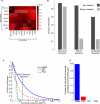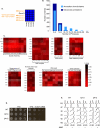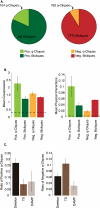Putting genetic interactions in context through a global modular decomposition
- PMID: 21715556
- PMCID: PMC3149503
- DOI: 10.1101/gr.117176.110
Putting genetic interactions in context through a global modular decomposition
Abstract
Genetic interactions provide a powerful perspective into gene function, but our knowledge of the specific mechanisms that give rise to these interactions is still relatively limited. The availability of a global genetic interaction map in Saccharomyces cerevisiae, covering ∼30% of all possible double mutant combinations, provides an unprecedented opportunity for an unbiased assessment of the native structure within genetic interaction networks and how it relates to gene function and modular organization. Toward this end, we developed a data mining approach to exhaustively discover all block structures within this network, which allowed for its complete modular decomposition. The resulting modular structures revealed the importance of the context of individual genetic interactions in their interpretation and revealed distinct trends among genetic interaction hubs as well as insights into the evolution of duplicate genes. Block membership also revealed a surprising degree of multifunctionality across the yeast genome and enabled a novel association of VIP1 and IPK1 with DNA replication and repair, which is supported by experimental evidence. Our modular decomposition also provided a basis for testing the between-pathway model of negative genetic interactions and within-pathway model of positive genetic interactions. While we find that most modular structures involving negative genetic interactions fit the between-pathway model, we found that current models for positive genetic interactions fail to explain 80% of the modular structures detected. We also find differences between the modular structures of essential and nonessential genes.
Figures





References
-
- Agrawal R, Imielinski T, Swami A 1993. Mining association rules between sets of items in large databases. Proc ACM SIGMOD Int Conf Manag Data 22: 207–216
-
- Altschul S, Gish W, Miller W, Myers E, Lipman D 1990. Basic local alignment search tool. J Mol Biol 215: 403–410 - PubMed
Publication types
MeSH terms
Substances
Grants and funding
LinkOut - more resources
Full Text Sources
Other Literature Sources
Molecular Biology Databases
